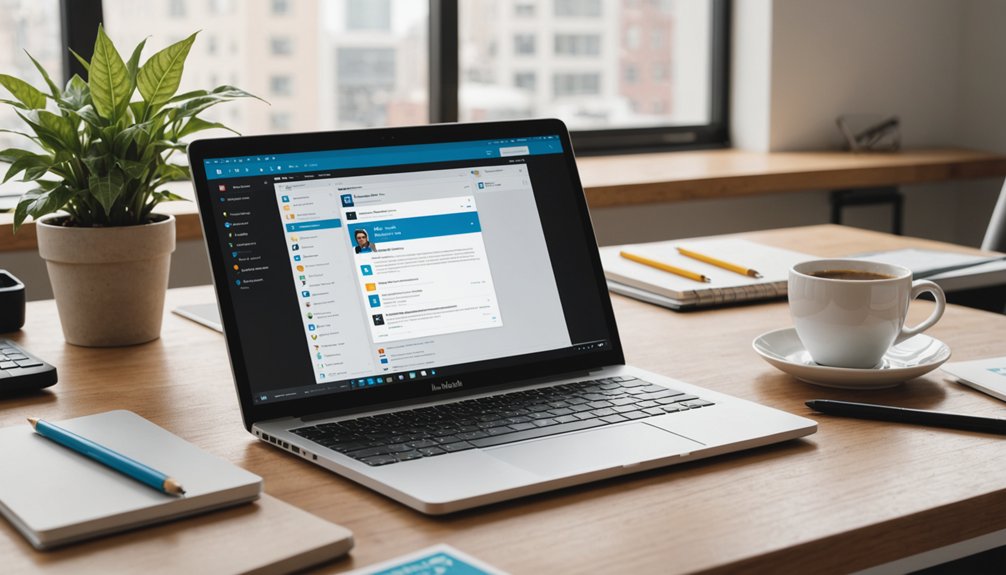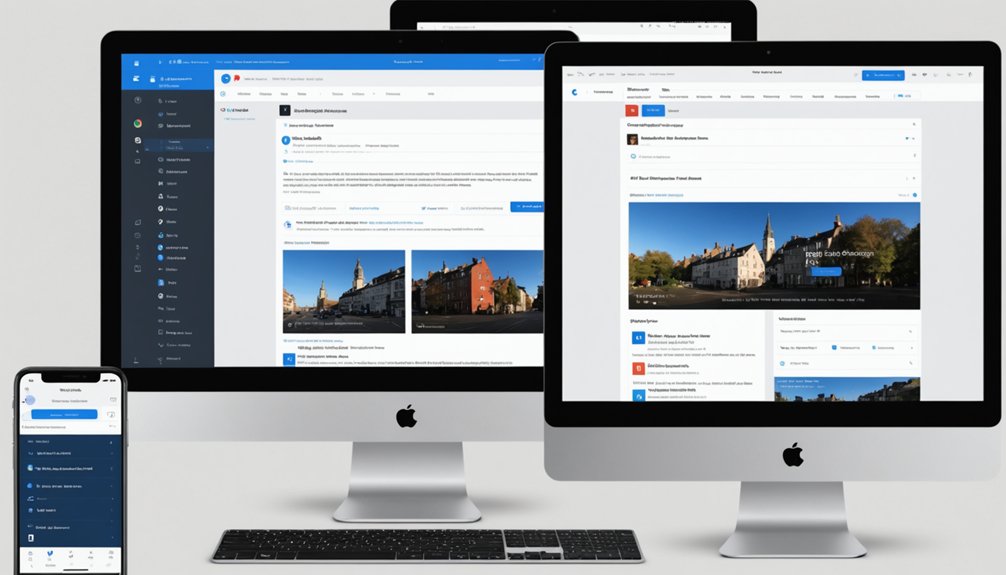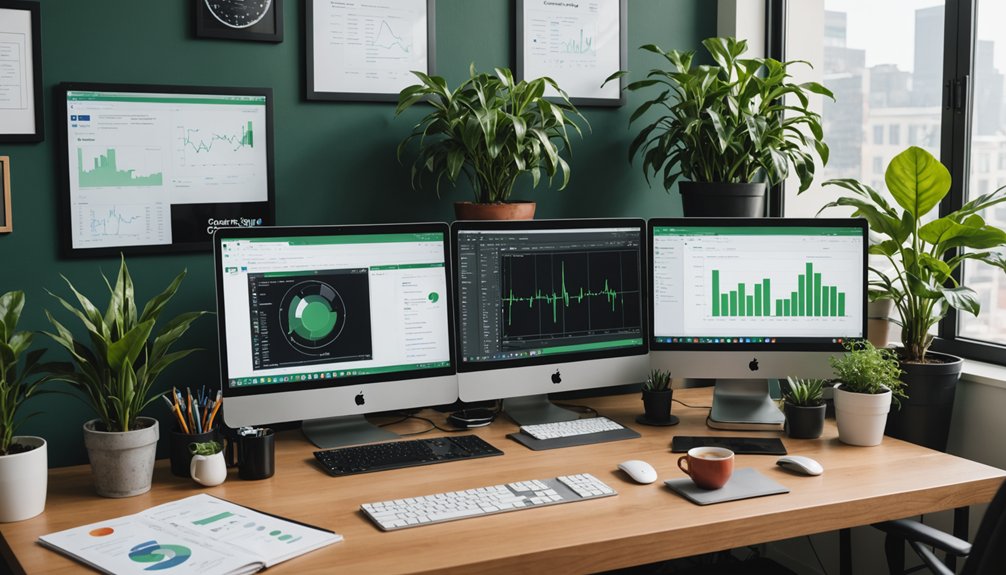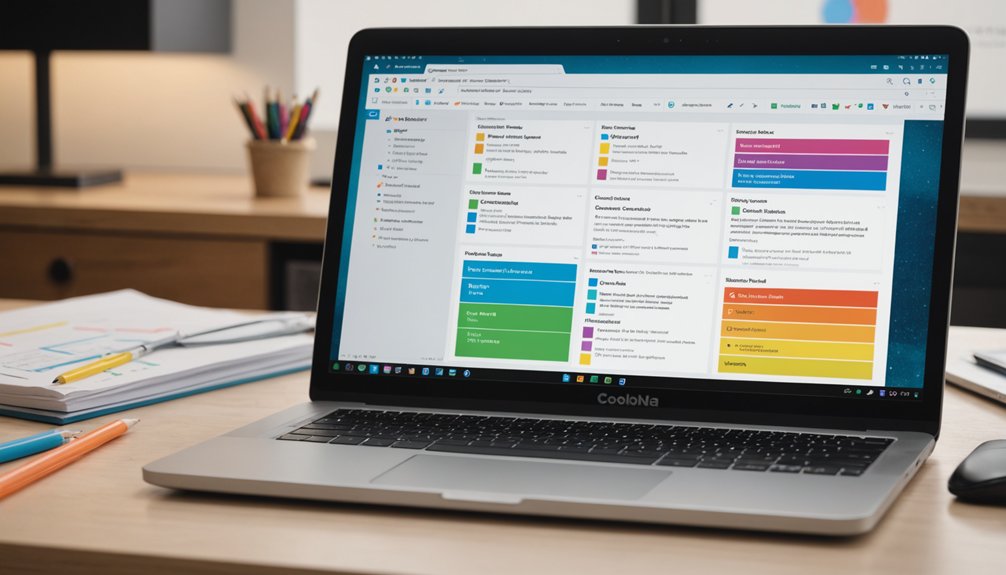Optimizing LinkedIn articles demands strategic keyword research and logical structure. Professionals who neglect these fundamentals disappear in the platform’s noise. High-quality visuals aren’t optional anymore—they’re essential for grabbing attention in crowded feeds. Personal stories and industry insights establish credibility, while consistent engagement in comments builds loyalty. Distribution strategies matter too; collaboration expands reach dramatically. Measurement reveals what actually works. The professionals dominating LinkedIn’s ecosystem understand these aren’t suggestions—they’re requirements.
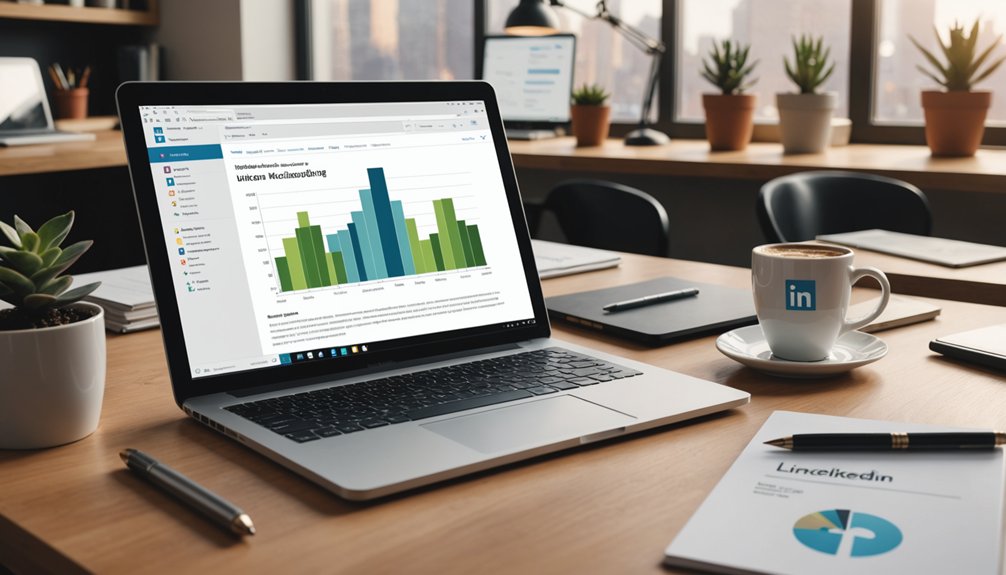
LinkedIn articles don’t magically rise to the top. They require strategic planning and thoughtful execution. The most successful content creators understand that optimization isn’t optional—it’s essential. Without it, even the most brilliant insights get buried in the algorithm’s abyss.
Keyword research forms the foundation of any effective LinkedIn article. Professionals who take time to identify relevant terms their audience actually searches for gain a significant advantage. Their competitors? Still guessing what might work. Tough luck for them. Creating long-tail keywords helps target specific professional audiences more effectively.
Keyword research isn’t optional—it’s the battlefield where smart creators win and lazy ones disappear.
Structure matters enormously. Articles with clear, logical organization keep readers engaged longer. Bounce rates plummet when content flows naturally from one section to the next. Meta titles and descriptions aren’t just technical requirements—they’re your first impression in search results. Get them wrong, and potential readers scroll right past. Simple as that. Implementing schema markup can significantly enhance your article’s visibility in search results.
Visuals dramatically increase engagement. Articles featuring high-quality images, infographics, and videos perform substantially better than text-only content. It’s 2023, not 1995. Walls of text don’t cut it anymore.
Content quality trumps everything else. Period. LinkedIn users are sophisticated professionals seeking genuine value, not fluff pieces padded with empty phrases. They can spot worthless content from a mile away.
Storytelling techniques transform ordinary articles into compelling narratives. Personal anecdotes and success stories create emotional connections that dry, factual writing never will. Industry insights establish authority. Charts illustrate complex concepts quickly. The most effective LinkedIn articles in 2025 will leverage personal storytelling elements to make complex information more relatable and memorable.
Strategic keyword integration throughout titles, subheadings, and body text boosts visibility without appearing forced or spammy. Articles should vary in length based on audience preferences—not arbitrary word counts.
Engagement isn’t optional. Content creators who actively participate in comments sections, acknowledge feedback, and conduct polls build loyal followings. Those who post and disappear wonder why their reach remains limited.
Local business groups offer untapped distribution potential. Consistent posting schedules maintain momentum. Creating a complete profile with relevant professional experiences significantly boosts your content’s visibility in LinkedIn’s algorithm. Collaboration expands reach exponentially. Measuring engagement metrics reveals what resonates with readers.
The difference between invisible articles and viral content? Often just these fundamentals. Applied consistently, they work. Ignored, they doom content to obscurity.
Frequently Asked Questions
How Often Should I Publish Linkedin Articles for Best Results?
Publishing LinkedIn articles 2-3 times per week strikes the best balance.
Once weekly posts can greatly boost engagement too.
Truth is, quality trumps quantity—nobody wants daily garbage cluttering their feed.
Different industries demand different frequencies; tech companies need more frequent updates than, say, manufacturing.
The ideal sweet spot? Consistent, valuable content that doesn’t overwhelm followers.
Analytics don’t lie—monitor what works and adjust accordingly.
Engagement matters more than arbitrary posting schedules.
Can I Repurpose Existing Blog Content for Linkedin Articles?
Absolutely. Repurposing blog content for LinkedIn articles is a smart move. Companies do it all the time.
Take those evergreen “how to” pieces, ultimate guides, or business strategy articles—they’re perfect candidates.
Just don’t dump them unchanged. Reformat for LinkedIn’s professional audience. Break down lengthy content into digestible chunks.
Add visuals. Spark discussions with questions. Analytics help too—prioritize pieces that performed well elsewhere.
Content that’s already proven? That’s gold on a new platform.
What’s the Ideal Length for a High-Performing Linkedin Article?
LinkedIn articles hit their sweet spot between 1,500 to 2,000 words.
That’s where engagement peaks.
But here’s the thing – it’s not a hard rule.
Some professionals crush it with content between 1,000 and 3,000 words.
Industry matters.
Topic complexity matters.
Audience attention spans matter.
Bottom line? Write what the story needs.
No more, no less.
The goal isn’t word count.
It’s keeping readers hooked without making them check how much scrolling remains.
Do Images and Videos Affect Linkedin Article Performance?
Images and videos greatly boost LinkedIn article performance.
They’re not just pretty additions. Visual content increases reach compared to text-only posts, with multi-image posts performing even better.
Videos outperform plain text, especially short ones under two minutes. Who knew?
Combining different media types enhances engagement.
But hey, don’t forget to optimize those visuals for mobile – because nobody enjoys squinting at tiny pictures on their phone screen.
Performance metrics don’t lie.
Should I Tag People When Sharing My Linkedin Articles?
Tagging people on LinkedIn articles can boost visibility—when done right.
Tag contributors, experts, and those professionally connected to the content, not random folks. Keep it to 2-3 relevant tags max.
Explain why you’re tagging them. Nobody likes being tagged in irrelevant content. Period.
Respect boundaries and focus on genuine engagement over reach.
Spammy tagging? LinkedIn’s algorithm might actually penalize that nonsense.
Quality over quantity wins here.
